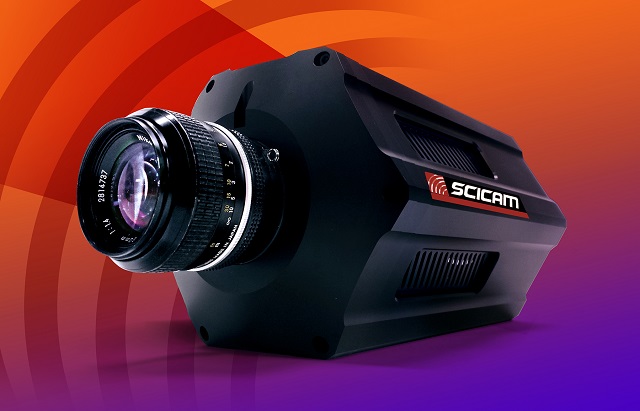Dec 16 2015
Princeton Infrared Technologies, Inc., introduces the 1280SCICAM, a revolutionary shortwave infrared (SWIR) camera that delivers the longest integration times and the highest frame rates at megapixel resolution, available on the market today.

The lattice-matched indium gallium arsenide (InGaAs) sensor features 1280 x 1024 resolution at frame rates greater than 95 frames per second (fps) at full-frame size and operates in the visible to shortwave infrared spectrum from 0.4 µm to 1.7 µm. The camera’s small 12-micron pitch, coupled with the low read noise (<30e-) and high quantum efficiency (> 75% from 1.0 to 1.6 microns) of the imaging array, make the new camera ideal for scientific imaging tasks in the SWIR and visible wavelengths. Other applications include high-speed machine vision and long-range surveillance operations where the small pitch is especially important.
A 3-stage thermoelectric cooler (TEC) is integrated into a vacuum package to provide the 1280SCICAM with three temperature setpoints for different conditions, 25 °C (no cooling), 0 °C (fan-cooled), and -50 °C (water-cooled). The on-board array has 14-bit digital output, snapshot exposure with no image lag, and features an unprecedented low read noise of
<30e- which is lower than any other cooled SWIR scientific camera currently available. Princeton IR Tech’s advanced SWIR-InGaAs camera has a medium-base Camera Link® to support fast full-frame-rate imaging. The camera’s high dynamic range ratio is greater than 3000:1, with integration times ranging from 50 microseconds to more than 3 minutes. The new 1280SCICAM is available with F- and C-mount lenses.
Princeton Infrared Technologies’ new scientific camera is the first product to launch from the advanced InGaAs-shortwave infrared imaging technology company.
We built the new 1280SCICAM because we thought the scientific and machine vision SWIR imaging market was lacking a 1.3 megapixel resolution camera that had low noise and high frame rates without image lag while also allowing long integration times for low signal levels.
Martin H. Ettenberg, Ph.D - CEO, Princeton Infrared Technologies, Inc.,
For more information, please visit here